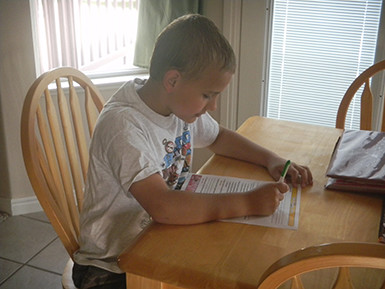
What is It?
Fragile X Syndrome is a genetic condition resulting from the mutation of the FMR1 gene on the X chromosome. This mutation can be carried on the X chromosome, which can affect future genereations. A child with this syndrome may not have a recent family history of the mutation in their genes. Generally children with Fragile X are developmentally delayed mentally and physically. Approximately 1 in 4,000 to 6,000 females and 1 in 3,600 to 4,000 males will have this mutation in their gene.
Signs of this syndrome tend to appear starting around age two. Individuals with this syndrome usually have delayed language and speech development, elongated faces, large bulging ears, prominent chin and forehead, high arched palate (roof of mouth), and flat feet among other symptoms. Behaviorial problems include hyperactive or impulsive actions, a delay in hand clapping, and a delay in crawling and walking.
Learning Support
The student will become more comfortable with you as you work with them. They may not engage in eye contact with you at first but will over time. You should expect inconsistency in their ability to focus, maintain attention, and performance. They may become frustrated and anxious at times so it is key to remain patient and consistent.
They are "simultaneous" and "sequential learners" which means they are good with sight words but do not do well with phonetics (speech sounds). They are motivated by the end-result. Have a checklist to help students see the goal and to help motivate them to complete the task. It is important to plan frequent breaks and keep tasks brief in order to help maintain attention. Too many verbal orders and directions can be confusing for these students, so it is important to include nonverbal communications in your lessons. Use of pictures is an example. Point at objects instead of just talking about it.
There are some environmental triggers that may make the student uncomfortable. These things could be sensitivity to light, textures, taste, and/or smell. These different triggers may need to be adjusted in order to give these students the safest learning environment.
One of the most important things you can do in offering educational support is to point out the strengths of the individual. Help each student to feel accomplishment and praise for their hard work. Make learning a fun opportunity, provide chances for them to be helpful, make learning useful for them in their everyday lives, and be supportive of them in their journey through the education system.
Sources
fragilex.org.au causes
ghr.nlm.nih.gov
drugs.com
fragilex.org teachers should know
fragilex.org prevalence